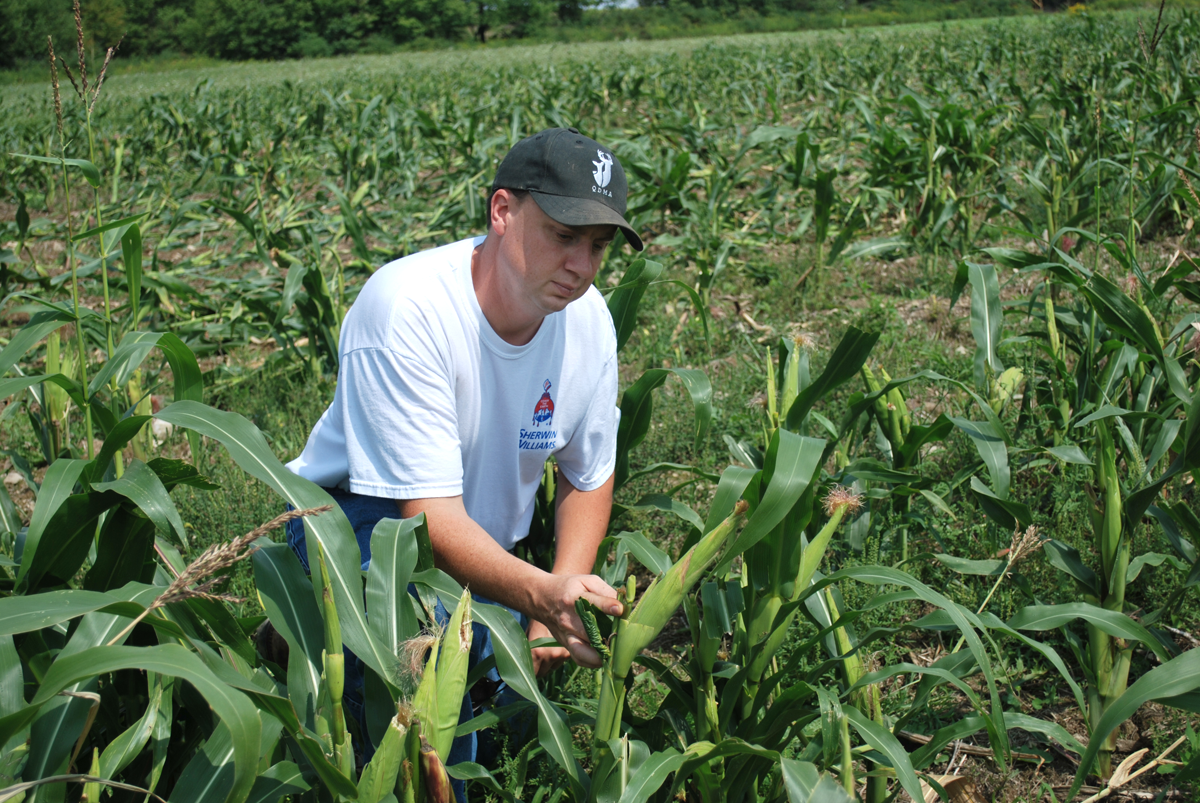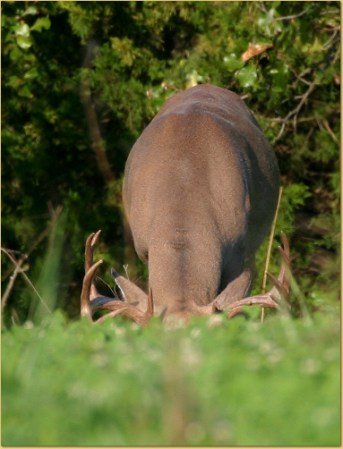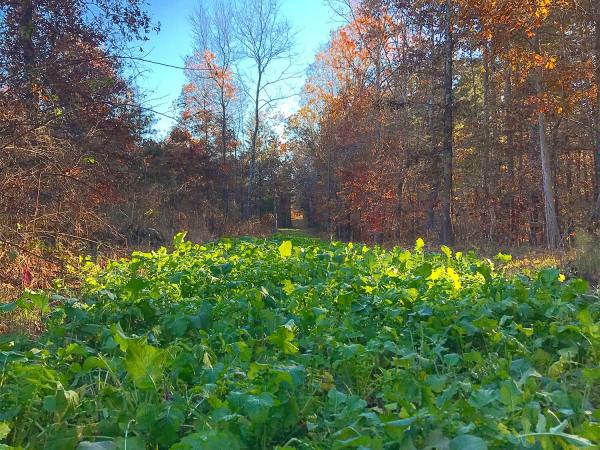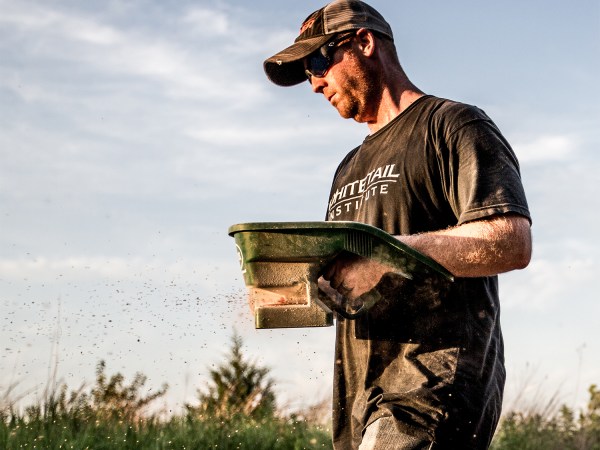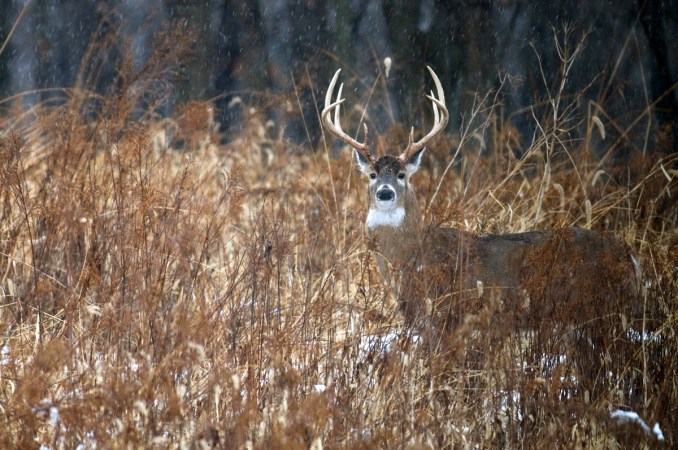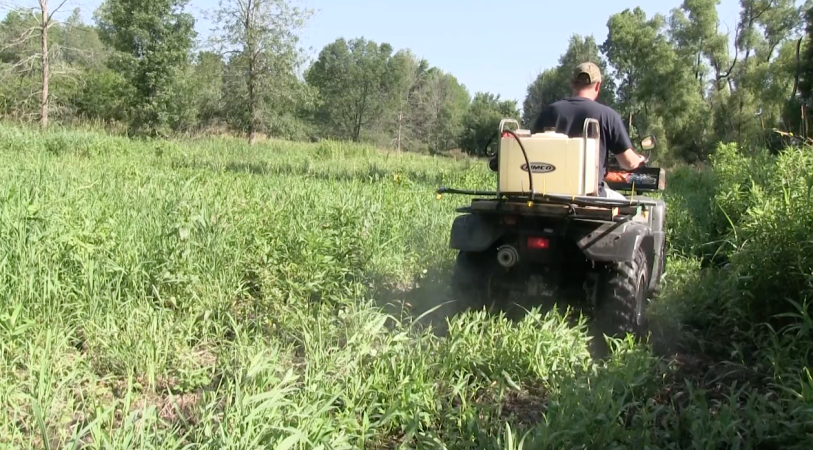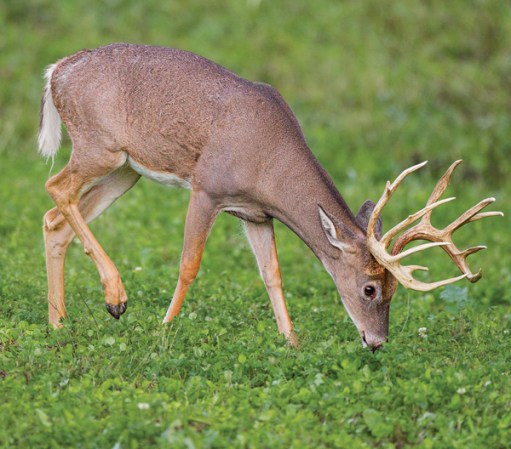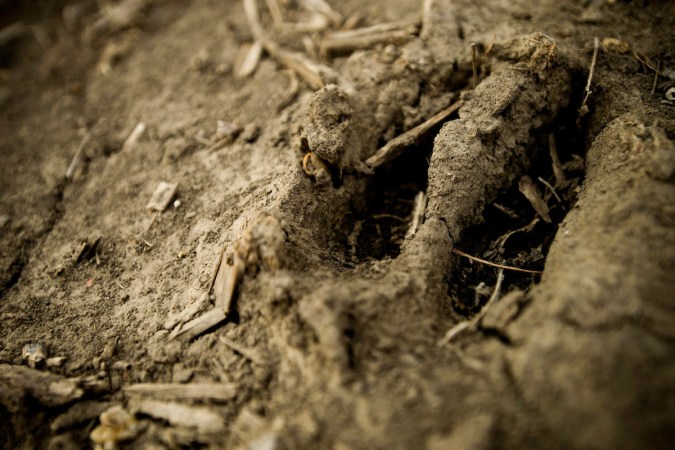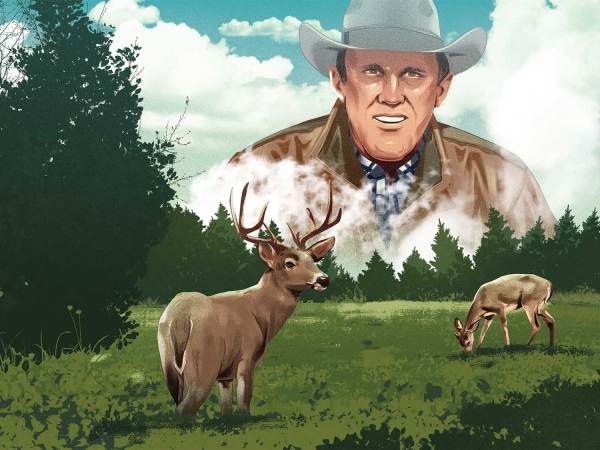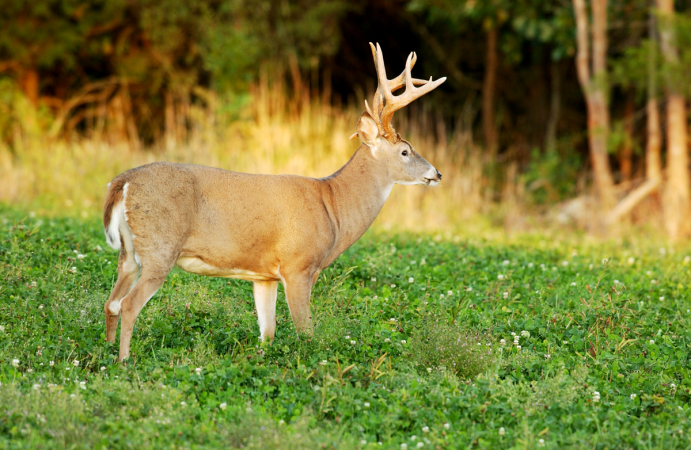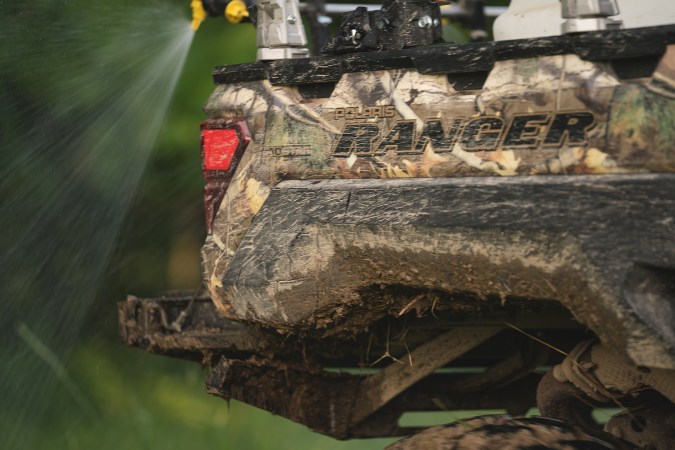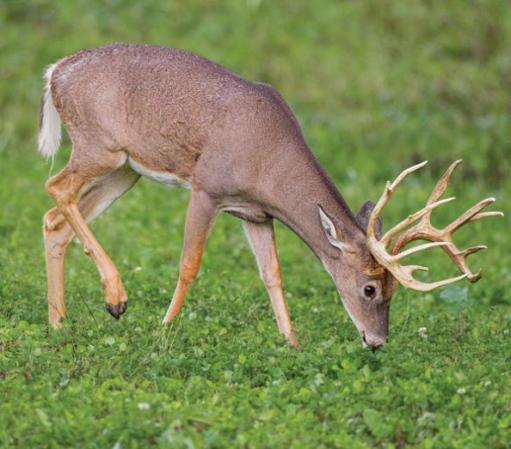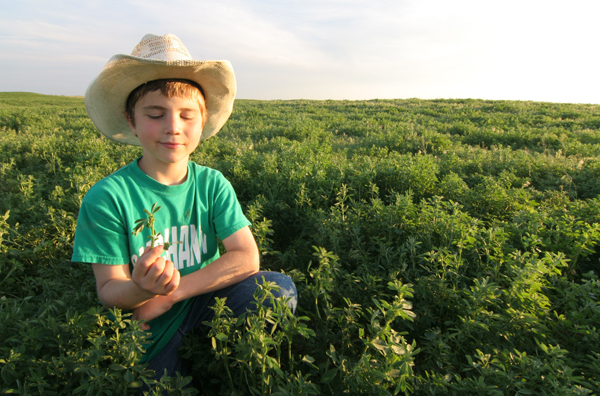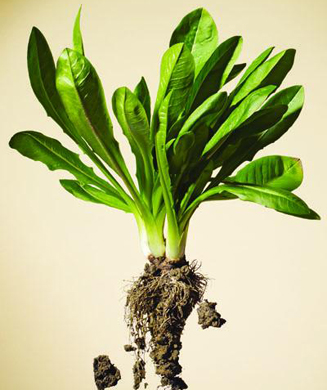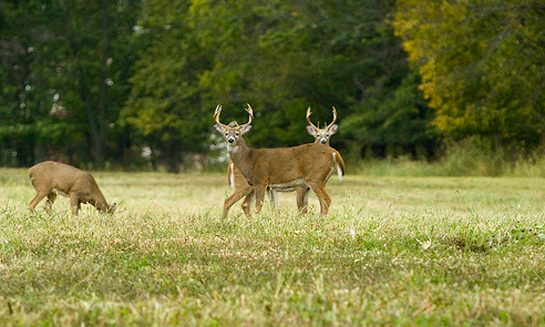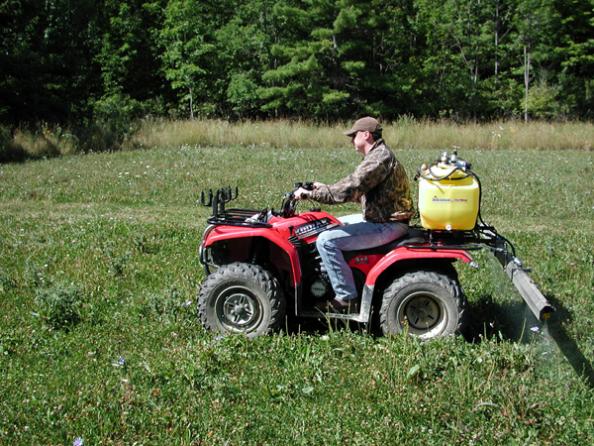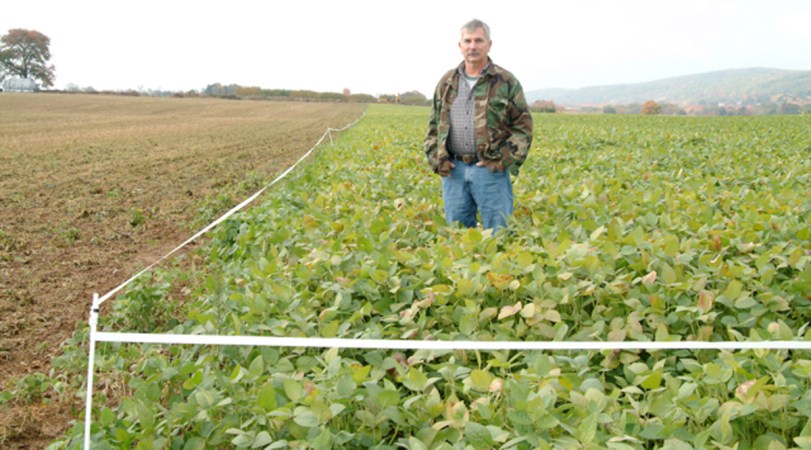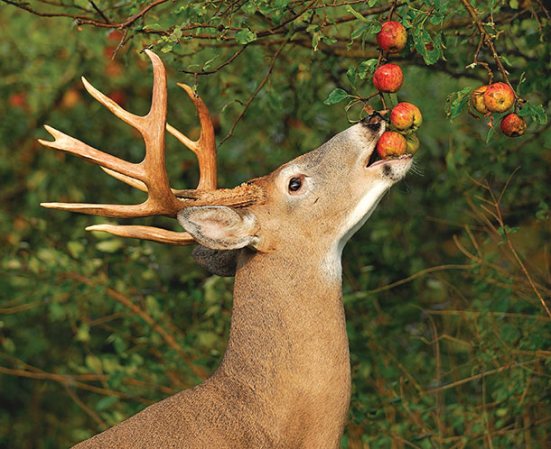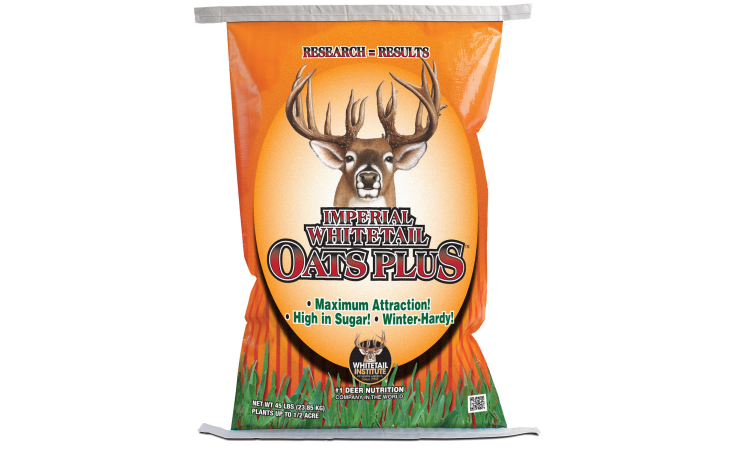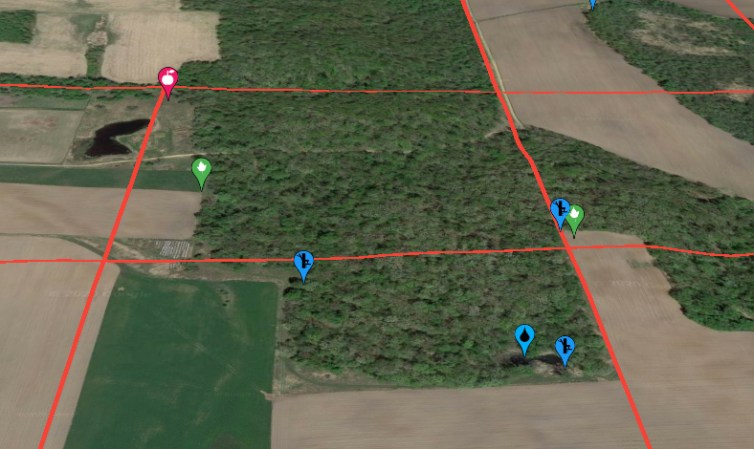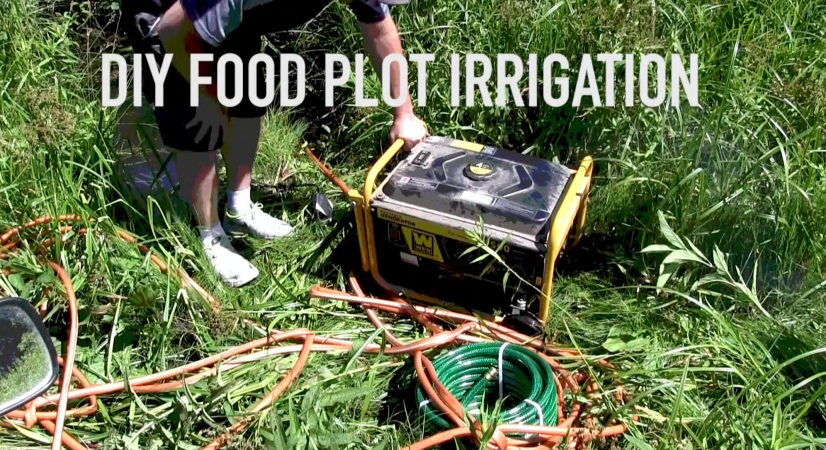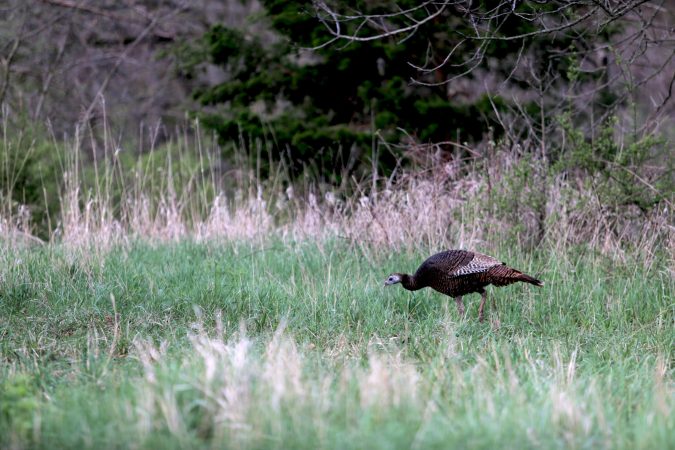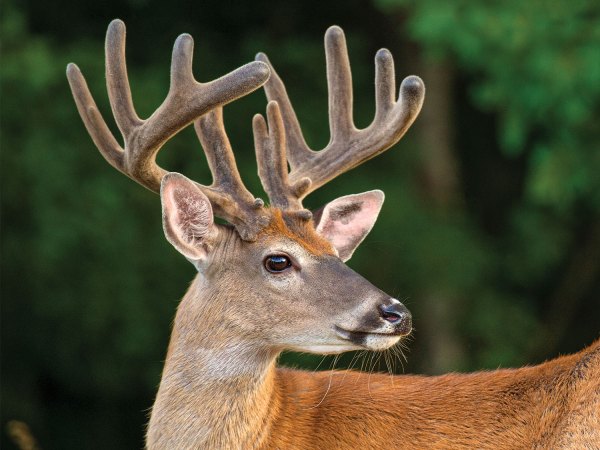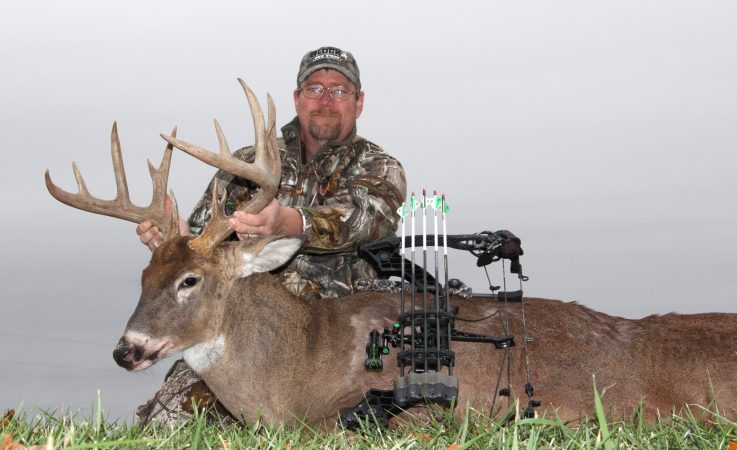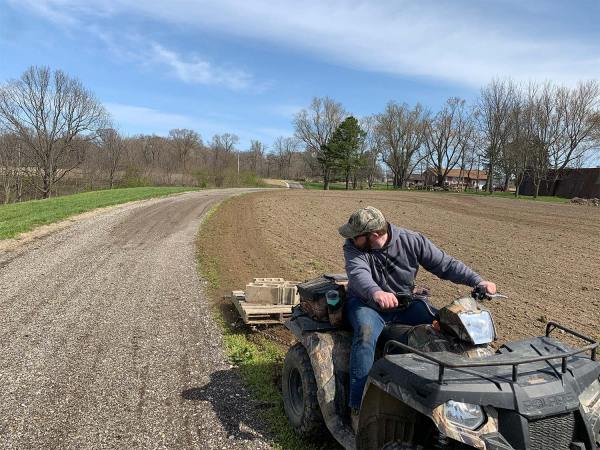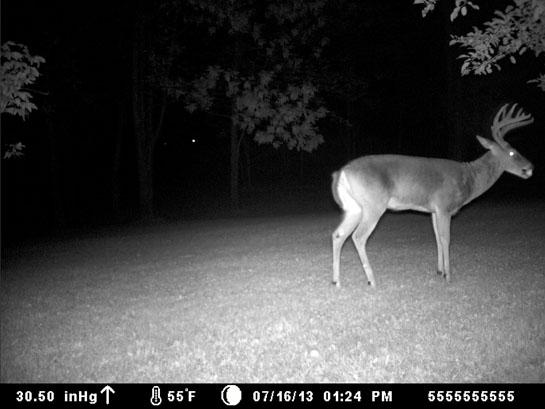By the time you read this blog, you may have already planted your food plots for the 2016 season. Hopefully they are off to a good start and headed for a productive fall. If they are like most plots, however they will experience one or more bumps in the road. Here’s the most common pot holes you are most likely to bust an axel in. We should know we have been hitting food plot bumps in the road for over 25 years. We’ve seen food plot failures of all types but they typically fall into three categories: poor soils, weeds, and over use by deer. That’s the bad news, the good news is they can be either prevented or fixed.
1. POOR SOIL
Most soils will grow plants. And most food plot blends are relatively easy to grow…for a while. But poor soils eventually catch up with you. Everything starts out nice and green but then some unusually wet or dry weather comes along and your plot drops into a soggy or droughty slump. The plants slowly fade and weeds more suited to the soil take over. It’s hard to fix excessively wet or dry soils, short of finding deer cultivars that like wet feet, as they call it, or excessively dry conditions. For example, many clovers can occasionally put up with wet feet and can tolerate soils that lean toward the wet side, and chicory, with its super deep tap root, can survive a dry summer on most dry soils. The bottom line? There’s no substitute for good soil. They can generally keep you out of trouble in all but the worst conditions. But baring that, selecting plants that can tolerate somewhat extreme conditions is always a step in the right direction.
So, what’s the best way to avoid soil problems? With an ounce of prevention. You MUST test your soil. Soil acidity or pH is typically the number one problem plot planters encounter. Poor or inadequate nutrition in the soil is the second. Plants must have nutrition in order to grow. Acidity interferes with nutrition availability. Luckily, you can balance soil with lime and fertilizer to solve most nutrition problems. Sadly, most food plotters overlook soil testing until it’s too late. It’s the easiest problem to solve, and the most common problem to ignore.
You must know your soil’s pH. The “knowing” part is easy, take some soil out of the plot and have it analyzed by your local USDA or feed and seed store. It’s too easy to ignore. If you can’t find someone there to do it, send the sample to the Whitetail Institute www.whitetailinstitute.com for analysis. Whoever you use, you will get change from a twenty dollar bill and probably some professional advice to go with it.
If the results of the test reveal your soil is outside the normal 6-7 range, you should achieve that range before planting. You do it by adding lime to the soil, which will neutralize the acidity.
The hard part is getting some lime on your soil. Small half- or quarter-acre plots are easy: buy a few bags of lime and a push-behind spreader, and get to work. Bigger plots and fields require some heavy equipment. We just spread 30 tons on 10 acres of plots. Thankfully we have a couple of good tractors and a lime buggy to make the job a simple, two hour no-brainier. You can a professional lime spreader or local farmer to do big plots for you.
Planting food plots on excessively acidic soil is a fool’s errand, so to speak. Poor pH makes for poor nutrition. Your plants will generally germinate but they won’t get much traction. Their growth will be weak, and they will give up the ghost the first time they encounter tough times. Weeds also easily crowd out weak plants.
2. WEEDS
When it comes to planting plots, weeds are another top enemy. They rob your deer forage of necessary food, water, and space. Deer will eat weeds, sure. But most properties have plenty of them growing wild and you don’t want to waste valuable space and resources on them.
The best way to control weeds is before they ever appear. Weed killing herbicides with 41% glyphosate (like Roundup) will kill em as soon as the glyphosate soaks through the leaves and hits the roots. Wait until the weeds start growing, then spray it on and walk away. Come back in a few days and plant to your heart’s content.
Sadly, most plots are already growing with clover or chicory or brassacas or whatever you planted before you realize you have a weed problem. Perennial grasses are generally the first invader to show up: first there are a few blades, then a few clumps, then the plot is overrun. Fortunately there are grass-specific herbicides (like Arrest, from the Whitetail Institute) that can be applied to already existing plots to kill grasses.
But as soon as you wipe out the grass, the broadleaf annual weeds appear. Fortunately, a few good mowings will keep the broadleaves from taking over a nice clover plot which can bounce right back from a good bushogging or simple trim with a plain old lawnmower. Broadleaf specific herbicides can also be sprayed on to rescue your clover plot from take over. Whatever you do don’t spray a plot full of deer broadleaves like turnips or they will go along with the weeds.
3. DEER USE
Yup, a plot can get wiped out by deer before it hardly gets a chance to get up and going. Overuse is more of a problem than you might imagine. It’s frustrating having your half-acre of turnips eaten clean before the season even opens. We see it all the time, especially in deer dense areas or areas without much native vegetation for deer food.
We put exclusion cages in our plots to keep track of how much the deer are eating. A little use is fine—it stimulates growth in some plants—but you don’t want your corn eaten before it’s time or your brassacas wiped out before hunting season.
Your best remedy is to fence the food in and the deer out until you are ready to start having them use it. We have to run electric fencing around all of our corn plots to keep the critters out. Our corn’’s biggest offenders are black bears, who used to wipe out the crop before we could even begin bowhunting. The deer will hit the tender young shoots as well as the corn once it matures. Now we keep everyone out until a few weeks before it’s time for them to feed.
Six-foot-high woven wire works in most applications, but it can also get expensive. Whatever you use, it really pays to keep the invaders out before they can destroy the plot you worked hard on all year. The last thing they need in summer or early fall is to use up your good plots. Summer and early fall woods are often filled with natural foods, so try to save your plots for hunting season and winter when you want to concentrate deer—and when they often need food the most.
